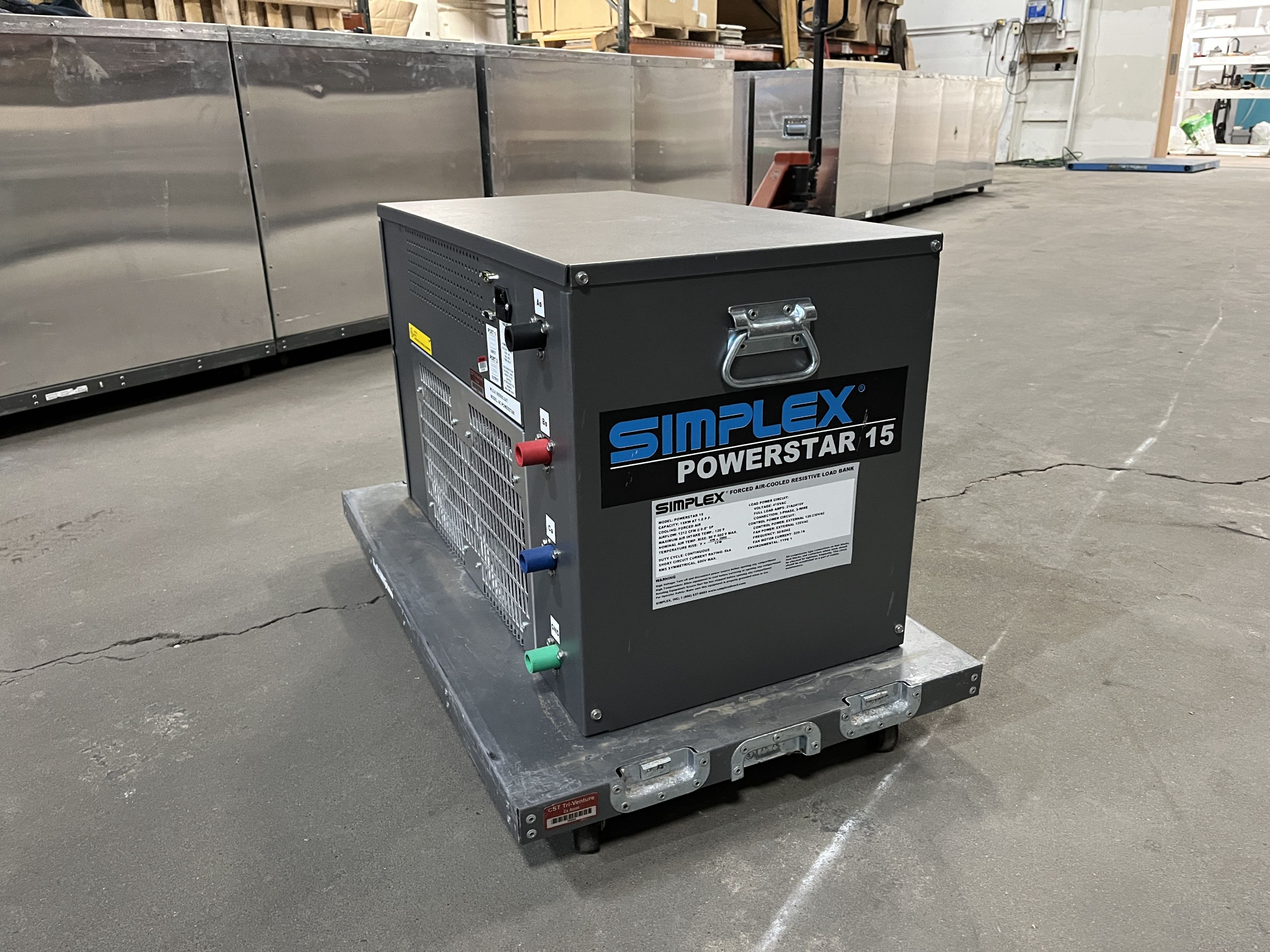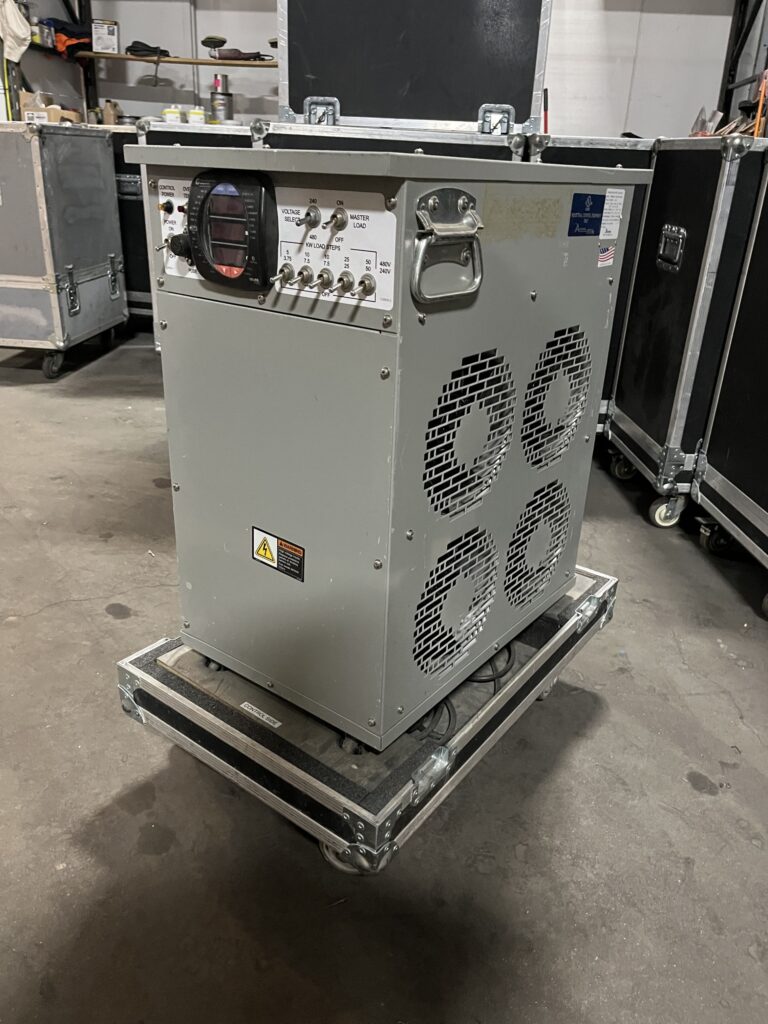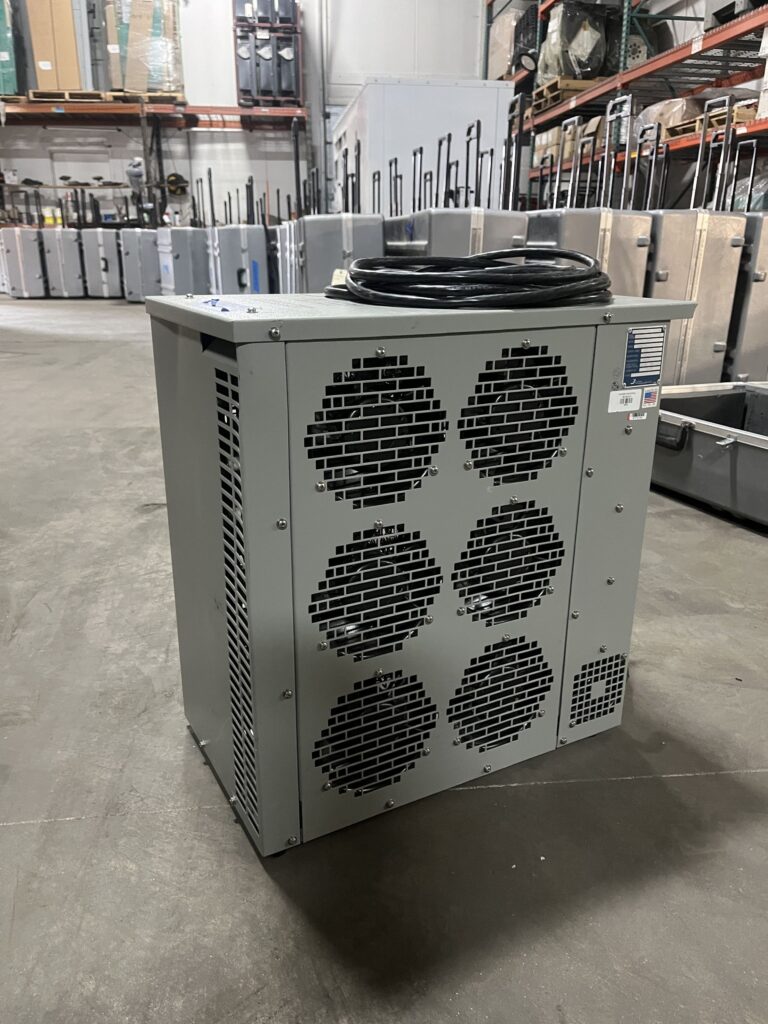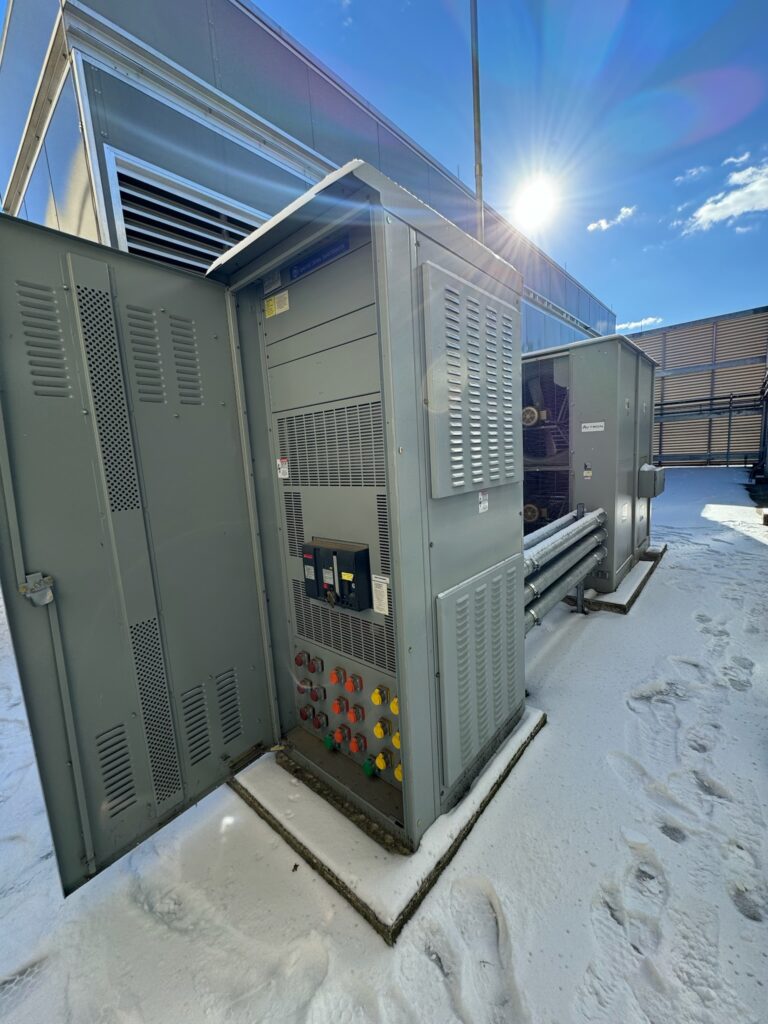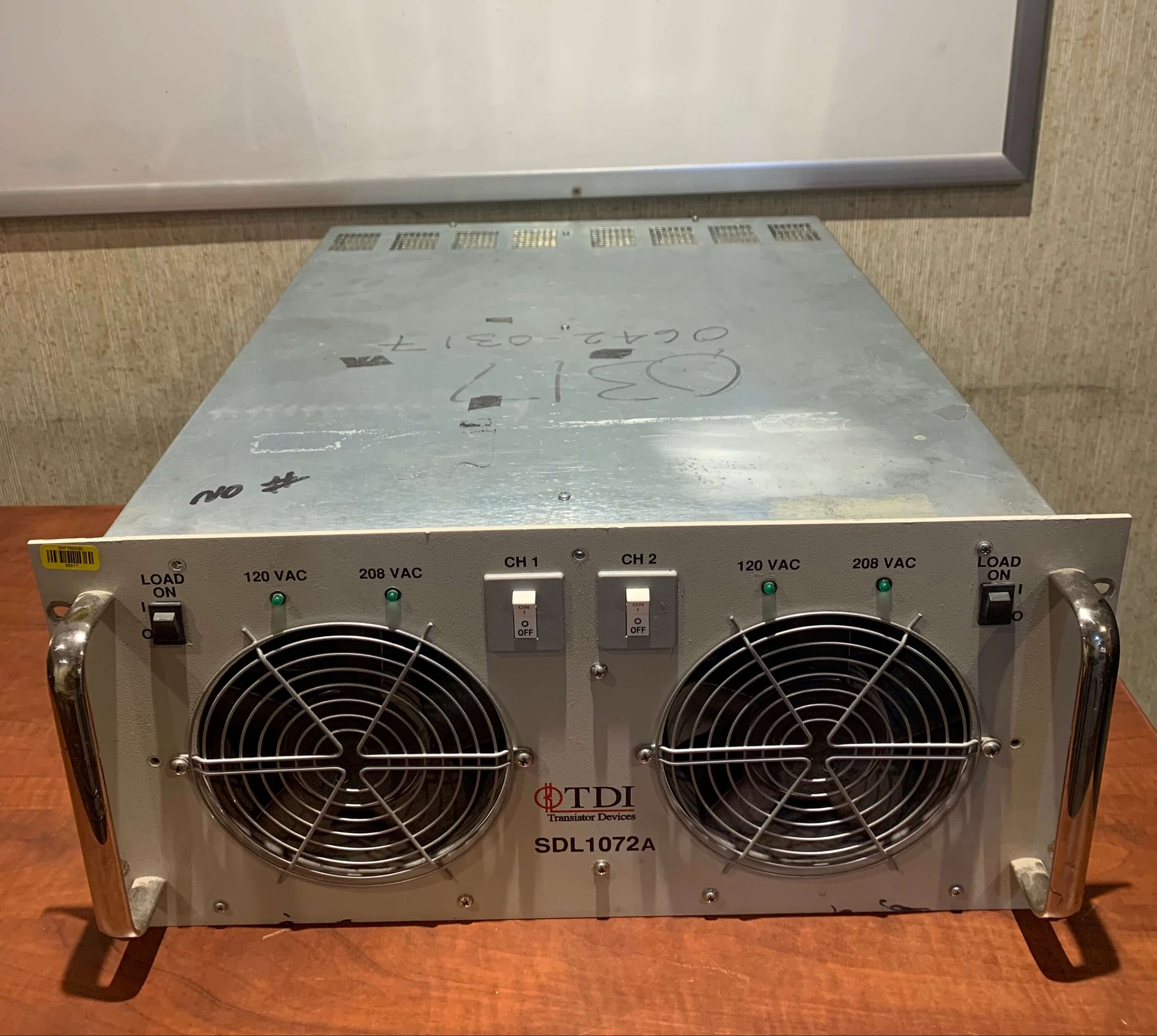Load Banks
Load Banks For Sale:
Simplex 15kw Powerstar 15 Forced Air-Cooled Resistive Load Bank
Avtron LPH100 100kW AC Resistive Portable Load Bank – 480V 3PH
Avtron 70KW Liberty LPH70 / D40909 AC Resistive Load Bank | 208V 3Ph 60Hz
Simplex 24kw 500 Amp DC Powerstar500 Forced Air-Cooled Resistive Load Bank
Avtron K975A 1500kW Outdoor Resistive Load Bank 480V-3PH-60Hz – 1389320
New 200kW Avtron K675A Outdoor Resistive Load Bank – PN: A051Y684
2240kW Simplex Forced Air-Cooled Resistive Load Bank
1575kVAR Simplex Forced Air-Cooled Reactive Load Bank (7)
Load Bank Disconnect Switches
GE 2500 Amp Load Bank Disconnect Switch (3PH, 480V, 60Hz)
Data Center Load Banks:
800 Watt TDI RBL232 Data Center Load Bank | S/N: 0136-0044
4kW TDI Power SDL-1072 Rack Mountable Load Bank for Data Centers
Medium Voltage Load Banks
500kVAR Controllix Corporation Load Bank 4160V | S/N: 89-109A-1
What is a Load Bank?
A load bank is a device which develops an electrical load, applies the load to an electrical power source and converts or dissipates the resultant power output of the source. Consequently, a load bank can be further defined as a self-contained, unitized, systematic device that includes load elements with control and accessory devices required for operation.
Whereas the “real” load is served by the power source and uses the energy output of the source for some productive purpose, the load bank serves the power source, using its energy output to test, support or protect the power source.
Applications:
Load banks are used in a variety of applications, including:
- Factory testing of turbines and engine diesel generator sets
- Reduction of wet stacking problems in diesel engines run at light load
- Periodic exercising of stand-by engine generator sets
- Battery and UPS system testing
- Ground power testing
- Load optimization in prime power applications
- Removal of carbon build-up on generator piston rings
- Load rejection tests
- Data center tests (electricity and air-conditioning)
Load Bank Types:
The three most common types of load banks are resistive, inductive, and capacitive. Both inductive and capacitive loads create what is known as reactance in an AC circuit. Reactance is a circuit element’s opposition to an alternating current, caused by the buildup of electric or magnetic fields in the element due to the current and is the “imaginary” component of impedance, or the resistance to AC signals at a certain frequency. Capacitive reactance is equal to 1/(2⋅π⋅f⋅C), and inductive reactance is equal to 2⋅π⋅f⋅L. The unit of reactance is the ohm. Inductive reactance resists the change to current, causing the circuit current to lag voltage. Capacitive reactance resists the change to voltage, causing the circuit current to lead voltage.
1. Resistive load bank
A resistive load bank, the most common type, provides equivalent loading for both generators and prime movers. That is, for each kilowatt (or horsepower) of load applied to the generator by the load bank, an equal amount of load is applied to the prime mover by the generator. A resistive load bank, therefore, removes energy from the complete system: load bank from generator—generator from prime mover—prime mover from fuel. Additional energy is removed as a consequence of resistive load bank operation: waste heat from coolant, exhaust and generator losses and energy consumed by accessory devices. A resistive load bank impacts upon all aspects of a generating system.
The load of a resistive load bank is created by the conversion of electrical energy to heat via high-power resistors such as grid resistors. This heat must be dissipated from the load bank, either by air or by water, by forced means or convection.
In a testing system, a resistive load simulates real-life resistive loads, such as incandescent lighting and heating loads as well as the resistive or unity power factor component of magnetic (motors, transformers) loads.
The most common type uses wire resistance, usually with fan cooling, and this type is often portable and moved from generator to generator for test purposes. Sometimes a load of this type is built into a building, but this is unusual.
Rarely a salt water rheostat is used. It can be readily improvised, which makes it useful in remote locations.
2. Inductive load bank
An inductive load includes inductive (lagging power factor) loads.
An inductive load consists of an iron-core reactive element which, when used in conjunction with a resistive load bank, creates a lagging power factor load. Typically, the inductive load will be rated at a numeric value 75% that of the corresponding resistive load such that when applied together a resultant 0.8 power factor load is provided. That is to say, for each 100 kW of resistive load, 75 kVAr of inductive load is provided. Other ratios are possible to obtain other power factor ratings. An inductive load is used to simulate a real-life mixed commercial loads consisting of lighting, heating, motors, transformers, etc. With a resistive-inductive load bank, full power system testing is possible, because the provided impedance supplies currents out of phase with voltage and allows for performance evaluation of generators, voltage regulators, load tap changers, conductors, switchgear and other equipment.
3. Capacitive load bank
A capacitive load bank or capacitor bank is similar to an inductive load bank in rating and purpose, except leading power factor loads are created, so reactive power is supplied from these loads to the system, hence improves the power factor. These loads simulate certain electronic or non-linear loads typical of telecommunications, computer or UPS industries.
4. Electronic load bank
An electronic load bank tends to be a fully programmable, air-or water-cooled design used to simulate a solid state load and to provide constant power and current loading on circuits for precision testing.

